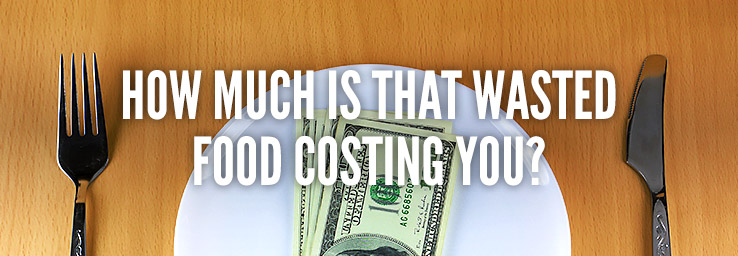How Much is that Wasted Food Costing You?
(Hint: It's more than just the cost of the food getting trashed.)
Wasted food is wasted money. As a foodservice operator, you are very aware of this connection. But we’re not just talking about the cost of the food that you’re throwing away. Food cost is certainly a major factor, but it doesn’t stop there—you’re paying for that “waste” many times over. In fact, five times by our calculation. Here’s the cold hard truth about the cost of that pan of rosemary chicken headed for the waste bin:
#1: The cost of the food.
All of the ingredients that went into the dish are being wasted, from the chicken to the lemon, garlic, butter and rosemary. And if you’re sourcing high-quality, organic or local products the cost of that waste has an even higher price tag.
#2: The cost of energy and water.
Every dish you prepare consumes energy and water. When you store the ingredients you’re paying for energy in the form of refrigeration and lighting. When you cook the dish you’re using energy. And any water you used along the way for washing, prep or cooking is also lost.
#3: The cost of labor.
In the case of overproduced items, such as our rosemary chicken, you paid staff members to prep and cook the dish—a dish that’s getting tossed into the trash and along with it the money spent on labor that could have been better spent prepping other money-making items.

Figure 1: Food, energy, labor, and disposal costs, as well as lost sales, all contribute to the greater cost of food waste.
#4: The cost of disposal.
Whether you’re composting or landfilling, there’s a cost to have your wasted foods hauled away. And the more waste you have in your bins, the more frequently you’re paying those tipping fees.
#5: The “cost” of lost sales.
If the 4 items above haven’t gotten your attention yet, here’s some additional food waste for thought. When you throw away food, you’re also throwing away your gross profit potential for that item. In the case of the rosemary chicken, perhaps it sat out on a buffet line and customers recognized it wasn’t fresh and chose not to buy it (leading to waste). Or perhaps you placed a prepared dish in the walk in and it timed out, precluding your ability to sell it. Either way, wasted food means lost profit.
The key message in all of this is that costs are higher than they appear on the surface. Make sure your entire kitchen team has a good understanding of the high cost of wasted foods. Utilizing tools to monitor waste can help raise employee awareness and instantly cut down on waste. Reach out to us at info@leanpath.com to learn more.
